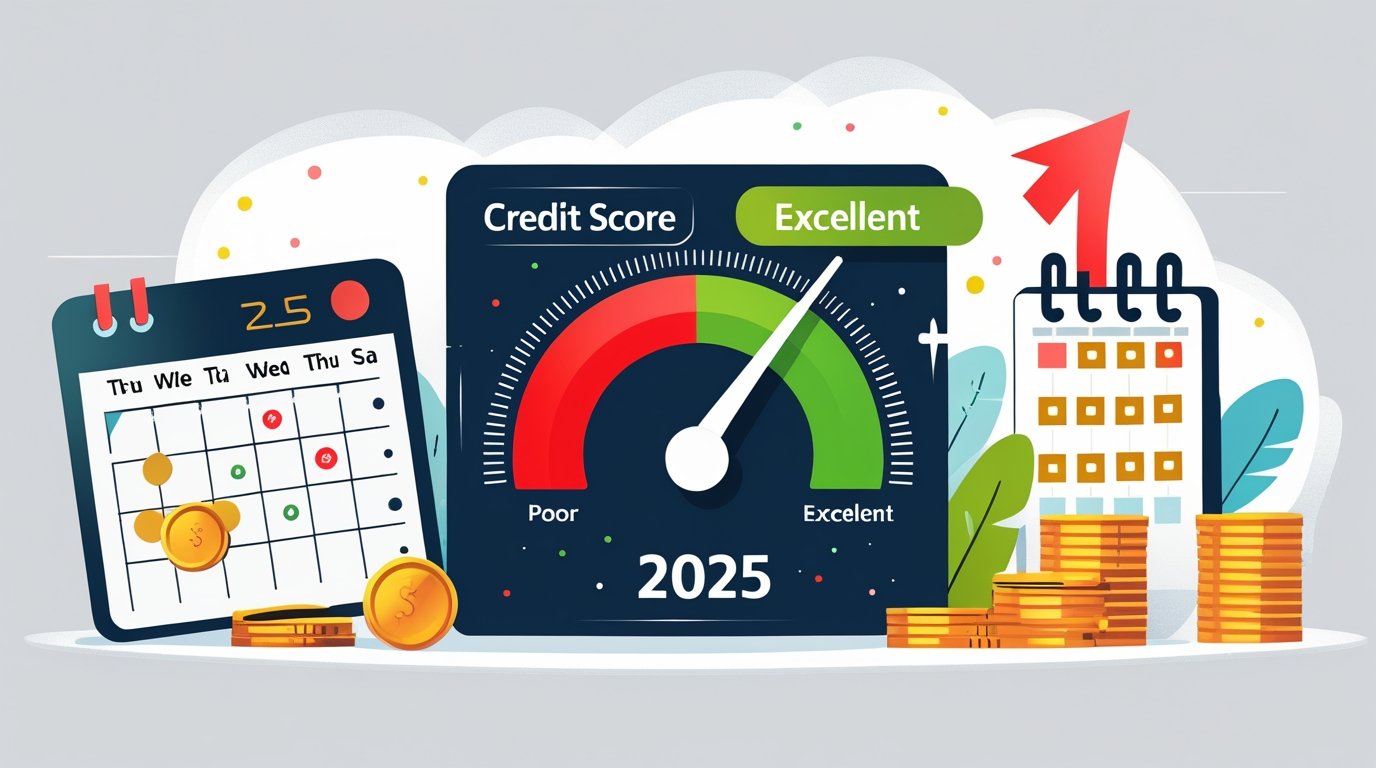Your credit score is more than just a number—it’s a key that unlocks financial opportunities or locks you out of them. A low score can mean higher interest rates, rejected loan applications, or even difficulty renting an apartment. In today’s economy, understanding and improving your credit score is essential for achieving financial goals like buying a home, securing a car loan, or even landing a job. This article will break down what a credit score is, why it’s critical, and provide actionable steps to boost it in 2025. Whether you’re starting with a poor score or aiming to maintain an excellent one, this guide offers practical insights to help you take control of your financial future.
What Is a Credit Score and How Does It Work?
A credit score is a three-digit number, typically ranging from 300 to 850, that reflects your creditworthiness. Lenders use it to assess how likely you are to repay borrowed money. The most common scoring model is FICO, though VantageScore is also widely used. Your score is calculated based on several factors:
- Payment History (35%): Do you pay bills on time? Late payments or defaults hurt your score.
- Credit Utilization (30%): This is the ratio of your credit card balances to your credit limits. Lower is better.
- Length of Credit History (15%): Longer credit accounts improve your score.
- Types of Credit (10%): A mix of credit cards, mortgages, and loans can boost your score.
- New Credit Inquiries (10%): Applying for multiple loans or cards in a short period can lower your score.
Why It Matters
A higher credit score can save you thousands. For example, on a $200,000 mortgage, a 760 score might get you a 3.5% interest rate, while a 620 score could mean 5%. Over 30 years, that’s a difference of over $50,000 in interest.
Real-World Example
Meet Lisa, a 29-year-old nurse. When she applied for a car loan, her 640 credit score resulted in a 7% interest rate. By paying down her credit card debt and making on-time payments for a year, she raised her score to 720, securing a 4% rate on her next loan, saving her $2,000 in interest.
What’s Considered a Good Credit Score?
Credit scores are categorized as follows (FICO model):
| Score Range | Category | Impact |
|---|---|---|
| 800–850 | Exceptional | Best rates, easy approvals |
| 740–799 | Very Good | Excellent rates, few restrictions |
| 670–739 | Good | Decent rates, most approvals |
| 580–669 | Fair | Higher rates, limited options |
| 300–579 | Poor | High rates, frequent denials |
Goal: Aim for at least 670 (Good) to access reasonable loan terms, but strive for 740+ for optimal rates.
How to Improve Your Credit Score in 2025
Improving your credit score takes time and discipline, but the payoff is worth it. Here’s a step-by-step guide:
Step 1: Check Your Credit Report
Errors on your credit report can drag your score down. Get free reports from Equifax, Experian, and TransUnion at AnnualCreditReport.com. Look for:
- Incorrect personal information
- Accounts you don’t recognize
- Late payments reported in error
Dispute inaccuracies online or via mail with the credit bureau.
Step 2: Pay Bills on Time
Payment history is the biggest factor in your score. Set up:
- Automatic Payments: Ensure minimum payments are never missed.
- Reminders: Use apps like Mint or calendar alerts for due dates.
Even one late payment can drop your score by 100 points, so stay vigilant.
Step 3: Reduce Credit Utilization
Keep your credit card balances below 30% of your limit. For example, if your limit is $10,000, aim to owe less than $3,000. Strategies include:
- Pay Down Debt: Focus on high-interest cards first.
- Request a Credit Limit Increase: Higher limits lower your utilization ratio.
- Spread Balances: Use multiple cards to keep individual balances low.
Step 4: Avoid New Credit Applications
Each hard inquiry (when you apply for credit) can ding your score by 5–10 points. Limit applications, especially if you’re planning a major purchase like a home.
Step 5: Keep Old Accounts Open
Closing old credit cards shortens your credit history and increases utilization. Even if you don’t use them, keep them active with small, recurring charges (e.g., a streaming subscription) paid off monthly.
Step 6: Diversify Your Credit Mix
If you only have credit cards, consider adding an installment loan (e.g., a small personal loan) to show you can manage different types of credit. Avoid this if you’re already stretched thin.
Case Study: Boosting a Credit Score
Mark, a 35-year-old freelancer, had a 590 credit score due to high credit card debt and a few late payments. He took these steps:
- Paid down $5,000 of his $15,000 credit card debt.
- Set up autopay for all bills.
- Disputed an incorrect late payment on his report.
Within 18 months, his score rose to 680, qualifying him for a mortgage with a 4.5% rate instead of 6%, saving him $30,000 over the loan’s life.
Tools to Monitor and Improve Your Credit Score in 2025
Technology makes managing your credit easier. Here are top tools:
| Tool | Features | Cost |
|---|---|---|
| Credit Karma | Free score, report monitoring, tips | Free |
| Experian Boost | Adds utility/rent payments to your report | Free |
| MyFICO | Detailed FICO score, simulator | $19.95–$39.95/month |
| YNAB (You Need a Budget) | Budgeting to reduce debt | $14.99/month |
What’s New in 2025: Experian Boost now includes streaming subscription payments, helping younger users build credit faster.
Pros and Cons of Focusing on Credit Score Improvement
| Pros | Cons |
|---|---|
| Lower interest rates on loans | Requires time and discipline |
| Better chances of loan/credit card approval | May tempt overspending to “build credit” |
| Improved financial confidence | Temporary score dips from inquiries/debt paydown |
FAQ Section
How Long Does It Take to Improve a Credit Score?
Improving your credit score depends on your starting point and actions. Minor issues (e.g., high utilization) can improve in 1–3 months by paying down debt. Serious issues (e.g., bankruptcy) may take 7–10 years to fully recover. Consistent on-time payments and low utilization can boost your score by 50–100 points in 6–12 months. Check your progress monthly using free tools like Credit Karma.
What Hurts Your Credit Score the Most?
Late payments, high credit utilization, and defaults (e.g., collections) are the biggest culprits. A single 30-day late payment can drop your score by 60–110 points. Maxed-out credit cards also signal risk to lenders. Avoid closing old accounts or applying for multiple loans simultaneously, as these can further harm your score. Regularly review your credit report to catch errors early.
Can I Improve My Credit Score Without a Credit Card?
Yes, you can build credit without a credit card. Pay utility bills, rent, or student loans on time, and use services like Experian Boost to report these payments. Secured credit cards or credit-builder loans are also options—they act like training wheels for credit. Be cautious with new accounts, as hard inquiries can temporarily lower your score.
Should I Pay Off All Debt to Improve My Credit Score?
Paying off debt helps, but don’t aim for zero credit utilization. Keeping balances at 1–10% of your credit limit shows responsible use. Focus on high-interest debt first to save money. If you have collections, negotiate a “pay for delete” with creditors to remove them from your report. Maintain on-time payments for other accounts to maximize your score.
Conclusion
Your credit score is a powerful tool that shapes your financial opportunities. By understanding its components and taking proactive steps—checking your report, paying on time, and reducing debt—you can improve your score and unlock better loan terms, lower interest rates, and greater financial freedom in 2025. Start today by reviewing your credit report or trying a tool like Experian Boost. Have tips or questions about improving your credit score? Share them in the comments or sign up for our newsletter for more financial advice!
Suggested Visuals
- Infographic: “Factors Affecting Your Credit Score”
- Video: “5 Quick Ways to Boost Your Credit Score in 2025”
- Chart: “Credit Score Ranges and Their Impact”

